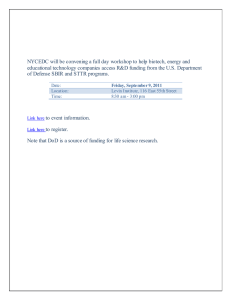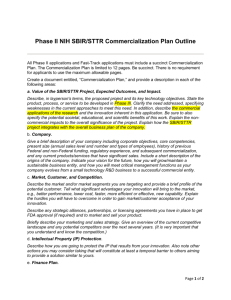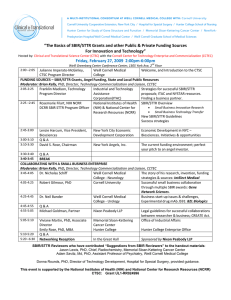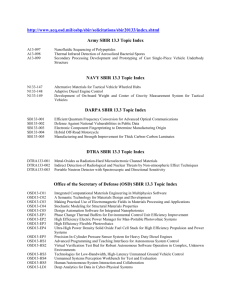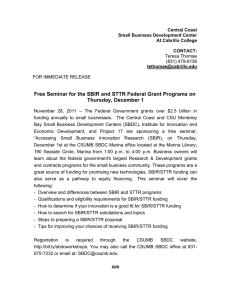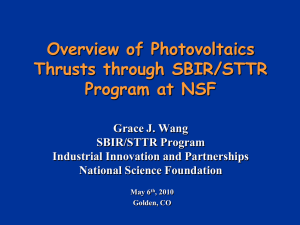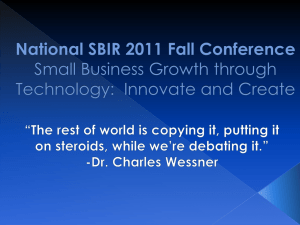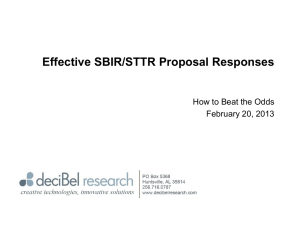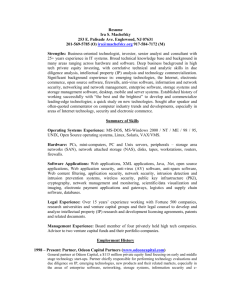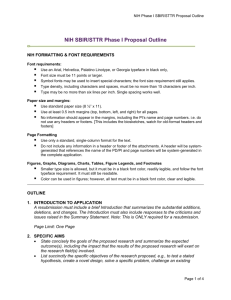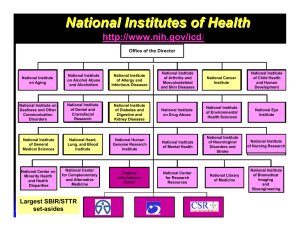SBIR/STTR Grants from a Reviewer’s Perspective Adam Savitz, MD, PhD
advertisement
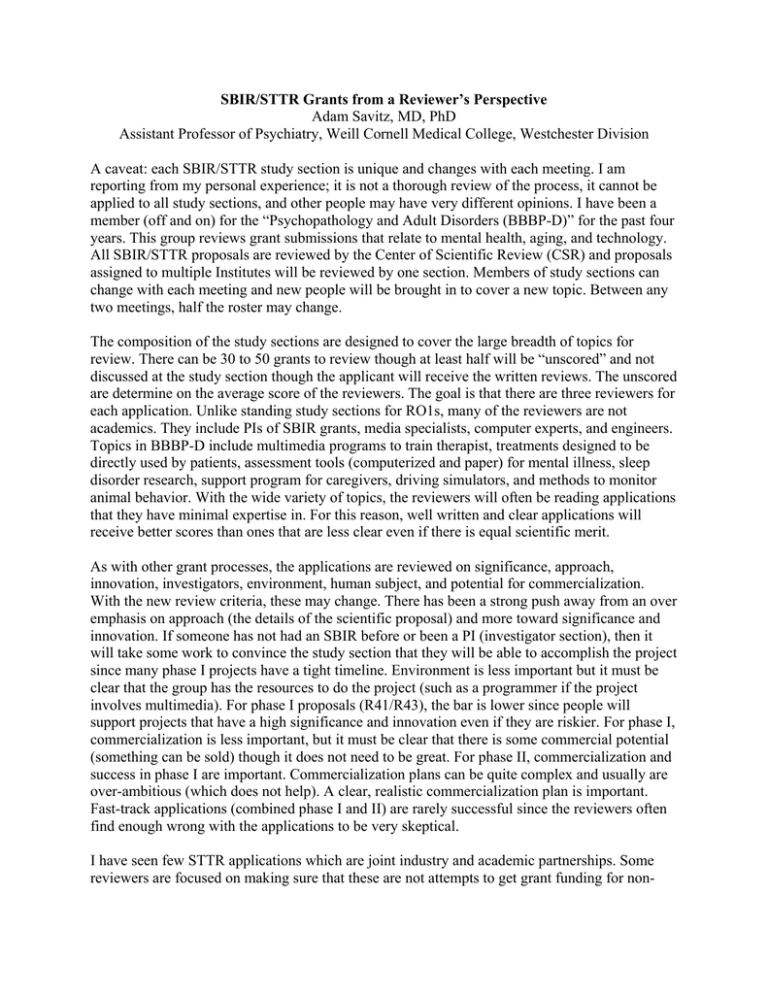
SBIR/STTR Grants from a Reviewer’s Perspective Adam Savitz, MD, PhD Assistant Professor of Psychiatry, Weill Cornell Medical College, Westchester Division A caveat: each SBIR/STTR study section is unique and changes with each meeting. I am reporting from my personal experience; it is not a thorough review of the process, it cannot be applied to all study sections, and other people may have very different opinions. I have been a member (off and on) for the “Psychopathology and Adult Disorders (BBBP-D)” for the past four years. This group reviews grant submissions that relate to mental health, aging, and technology. All SBIR/STTR proposals are reviewed by the Center of Scientific Review (CSR) and proposals assigned to multiple Institutes will be reviewed by one section. Members of study sections can change with each meeting and new people will be brought in to cover a new topic. Between any two meetings, half the roster may change. The composition of the study sections are designed to cover the large breadth of topics for review. There can be 30 to 50 grants to review though at least half will be “unscored” and not discussed at the study section though the applicant will receive the written reviews. The unscored are determine on the average score of the reviewers. The goal is that there are three reviewers for each application. Unlike standing study sections for RO1s, many of the reviewers are not academics. They include PIs of SBIR grants, media specialists, computer experts, and engineers. Topics in BBBP-D include multimedia programs to train therapist, treatments designed to be directly used by patients, assessment tools (computerized and paper) for mental illness, sleep disorder research, support program for caregivers, driving simulators, and methods to monitor animal behavior. With the wide variety of topics, the reviewers will often be reading applications that they have minimal expertise in. For this reason, well written and clear applications will receive better scores than ones that are less clear even if there is equal scientific merit. As with other grant processes, the applications are reviewed on significance, approach, innovation, investigators, environment, human subject, and potential for commercialization. With the new review criteria, these may change. There has been a strong push away from an over emphasis on approach (the details of the scientific proposal) and more toward significance and innovation. If someone has not had an SBIR before or been a PI (investigator section), then it will take some work to convince the study section that they will be able to accomplish the project since many phase I projects have a tight timeline. Environment is less important but it must be clear that the group has the resources to do the project (such as a programmer if the project involves multimedia). For phase I proposals (R41/R43), the bar is lower since people will support projects that have a high significance and innovation even if they are riskier. For phase I, commercialization is less important, but it must be clear that there is some commercial potential (something can be sold) though it does not need to be great. For phase II, commercialization and success in phase I are important. Commercialization plans can be quite complex and usually are over-ambitious (which does not help). A clear, realistic commercialization plan is important. Fast-track applications (combined phase I and II) are rarely successful since the reviewers often find enough wrong with the applications to be very skeptical. I have seen few STTR applications which are joint industry and academic partnerships. Some reviewers are focused on making sure that these are not attempts to get grant funding for non- commercial projects. My guess is that the acceptance of STTRs will vary greatly depending on study section. Depending on the reviewers, sometimes there is a large focus on compliance with the rules of STTR/SBIRs and at other times this is left to the Institutes. Budgets are a small focus on the project and should not play a role in the review score. The quality of the applications varies greatly. Most of the grants are not as scientifically rigorous as R01s or even smaller grants. Because a certain percentage of each Institute’s budget needs to go to SBIR projects, projects with lower scores (higher numbers) will be funded. With the previous scoring system, some proposals with scores of 200 were funded. The goal of CSR is for the grants to be reviewed and information forwarded to the Institutes so that applicants can revise their grants for the next round though this is often a very tight schedule. In the review process, response to comments is very important though responding well is not going to guarantee a good score since a new reviewer may find something else negative. Below is the CSR summary for SBIR/STTR study sections as well as a link to the different study sections. One can review the membership of recent study sections though this may change significantly from one cycle to the next. CSR SBIR/STTR Study Sections Small business innovation research and small business technology transfer grant application. Review panels are assembled on an ad hoc basis for each meeting; therefore, their designations and scientific emphasis may change with each review cycle. http://www.csr.nih.gov/Roster_proto/sbir_section.asp As I said before, these are my opinions and each study section will be different. I am happy to answer any questions through email at ads9002@med.cornell.edu. I cannot comment on applications that I have reviewed in the past, and I will have to excuse myself from the study section (if I am on it in the future) for any Weill Cornell applications.
